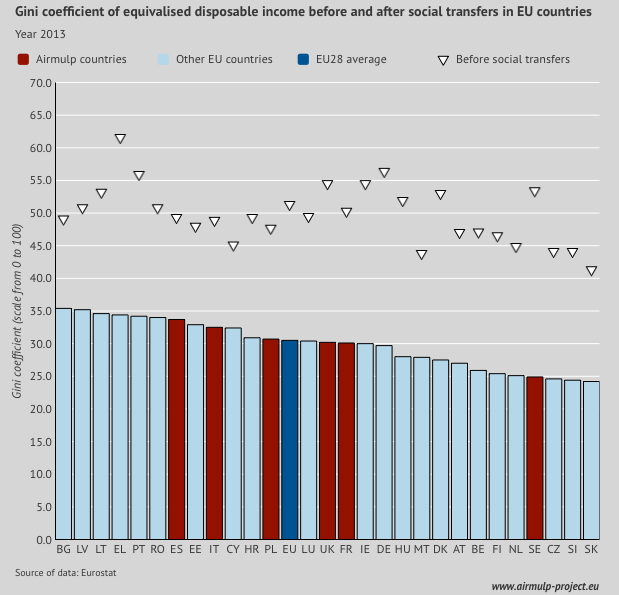9. Gini coefficient before and after social transfer - Chart 9
According to Eurostat, the Gini coefficient is defined as the relationship of cumulative shares of the population arranged on the basis of the level of equivalised disposable income, to the cumulative share of the equivalised total disposable income received by them.
The figure below shows the values of the Gini coefficient of equivalised disposable income before and after social trasfers (including pensions) in the 28 Member States of the European Union, in 2013.
Among the Airmulp countries, specifically, Spain and Italy are clearly above the EU28 average (32.5 and 32.4 respectively) and display a comparatively low impact of social transfers. Poland, United Kingdom and France are in an intermediate position, near the EU28 average (30.7, 30.2 and 30.1 in that order), though the United Kingdom displays a higher impact of social transfers. Sweden, then, has a very low value of the Gini coefficient (24.9) and the highest differential in relation to the situation before social transfers.



